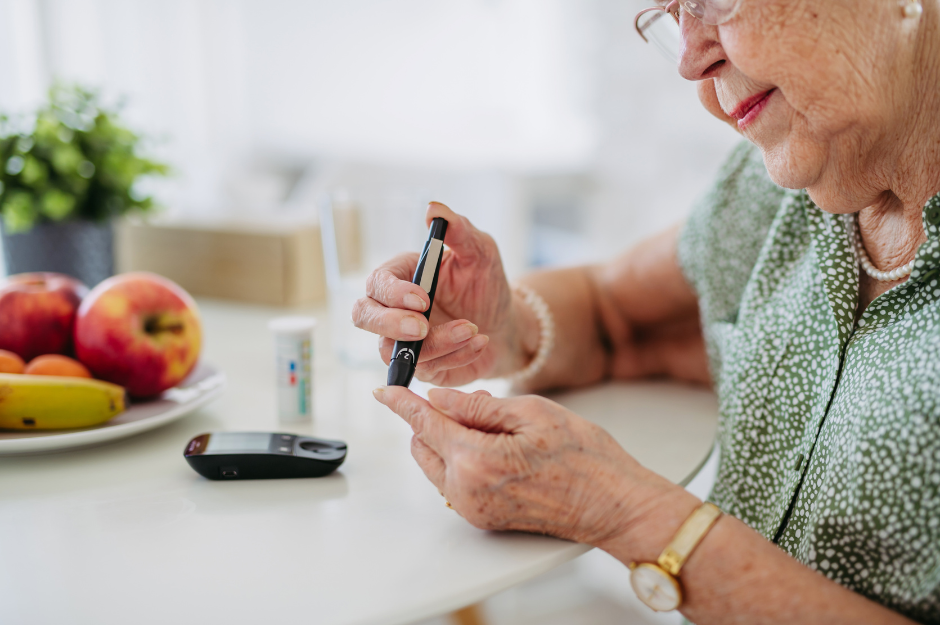Diabetes is quite a prevalent condition in the elderly, affecting almost 33% of people aged 65 or more. However, some preventive and management steps can help us manage the disease and keep it under control. This article will discuss some of the practical tips to manage old-age diabetes.
Regular physical activity
Regular physical activity, such as walking, yoga, and other mild-to-moderate activities, can reduce blood glucose levels. First, exercising muscles consumes more glucose, decreasing the blood glucose levels. Second, obesity is the primary risk factor for type-2 diabetes, while regular exercise can reduce body weight. Third, regular physical activity makes the body use insulin efficiently and keeps blood sugar levels in the normal range.
Healthy eating patterns
One of the most essential tips for keeping blood glucose levels in check is to follow healthy eating patterns. We should eat less trans and saturated fat, deep-fried, and sugary foods. Instead of sugary foods, we should eat fibrous, whole-grain foods such as cereals, breads, crackers, brown rice, or pasta. We should also try to eat fresh fruits and veggies such as spinach, tomatoes, carrots, apples, apricots, and peaches, and drink water rather than sugary juices or sodas.
ABCs’ regular monitoring
- HbA1C test
This test measures blood glucose levels for the last three months. It gives us information about our diabetic control.
- Blood pressure
High blood pressure levels, particularly in diabetics, can damage different organs, including eyes, kidneys, and brain cells.
- Cholesterol
High cholesterol and LDL (Low-Density Lipoprotein) levels can deposit in the small vessels of the heart and brain. Unfortunately, high glucose levels speed up the process of their deposition, increasing the risk of heart attack and stroke.
Glucose-lowering medications
Sometimes, diet and exercise alone are insufficient, so medication is necessary to maintain blood glucose levels. However, glucose-lowering drugs should only be taken as prescribed by a licensed healthcare professional. The following are the primary anti-diabetic drugs usually prescribed by physicians.
- Insulin directly interacts with glucose and increases its metabolism in the body.
- Alpha-glucosidase inhibitors ( Precose& Glyset) slow down the digestion of starches and sugar.
- Sulfonylureas ( available as Micronase, Glynase, Diabeta, and Glucotrol) help release more insulin.
- Prandin and Starlix are insulin secretagogues that aid in releasing insulin and lowering blood sugar.
- Glucophage and thiazolidinedione use multiple mechanisms of action to decrease blood glucose levels.
Stress reduction
Stress induces hormonal release, which contributes to the elevation of blood glucose levels. Relaxation techniques like book reading, yoga, deep breathing exercises, and gardening can help us relax and reduce mental stress.
Other essential tips
- We should check and clean our feet regularly to avoid any diabetic ulcers.
- We should also trim our nails with care to prevent any wounds.
- It is also better to avoid wearing tight shoes.
- We should go for eye check-ups regularly.
- If there’s any non-healing wound or ulcer, we should take it more cautiously as it can lead to necrotic (dead) tissue in people with diabetes quite rapidly.
Take home
Diabetes is a medical condition characterized by increased blood glucose levels, affecting about two-thirds of the elderly. To manage this condition, we should be physically active, eat healthy foods, and avoid stress. Relaxation techniques like yoga, meditation, and deep breathing exercises can help reduce mental stress. Moreover, it is also essential to regularly monitor our HbA1c levels, lipid levels, and blood pressure, as diabetes can increase the risk for heart conditions and stroke. In case of persistent high blood glucose levels, we should consult with a healthcare professional to start glucose-lowering medications.

